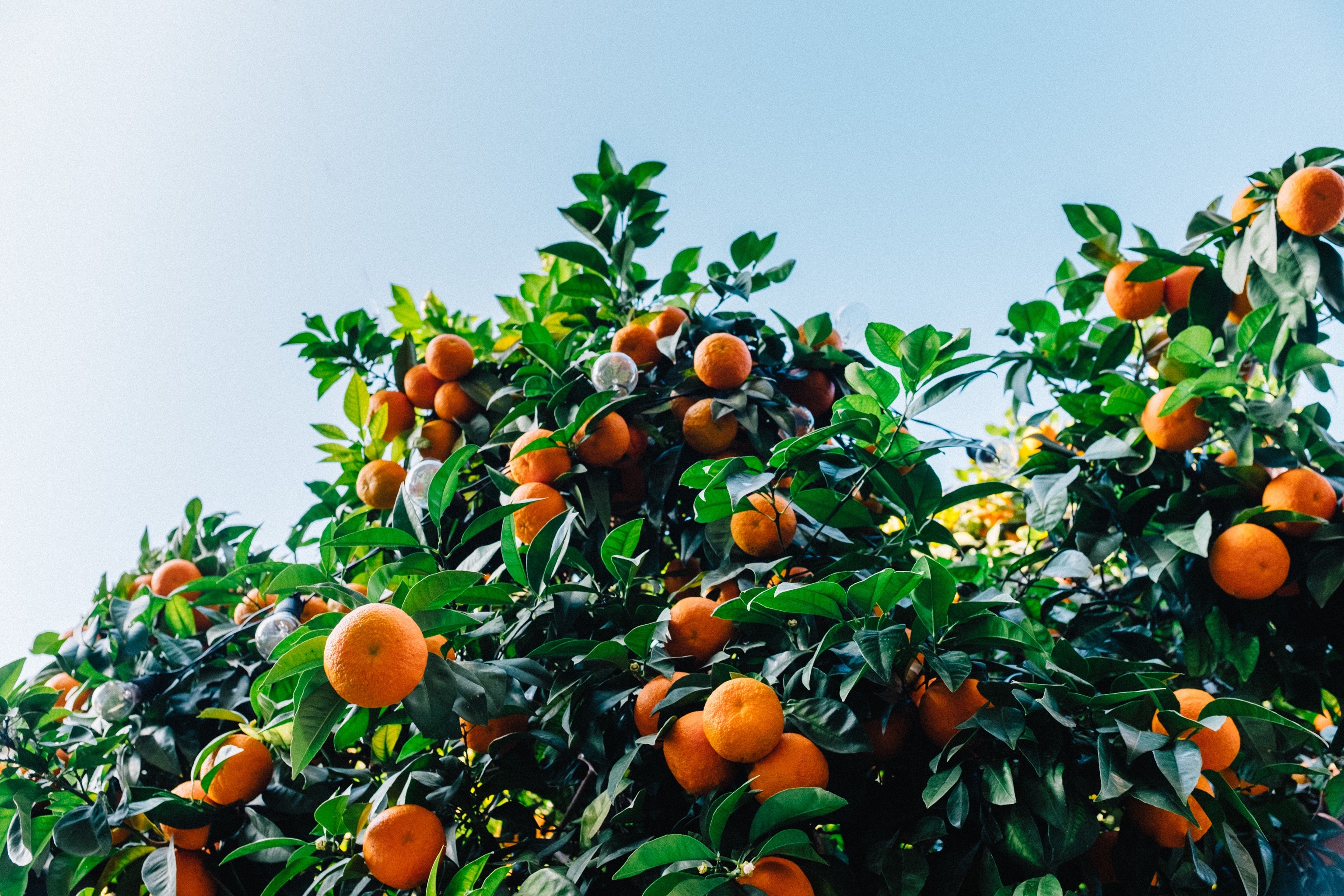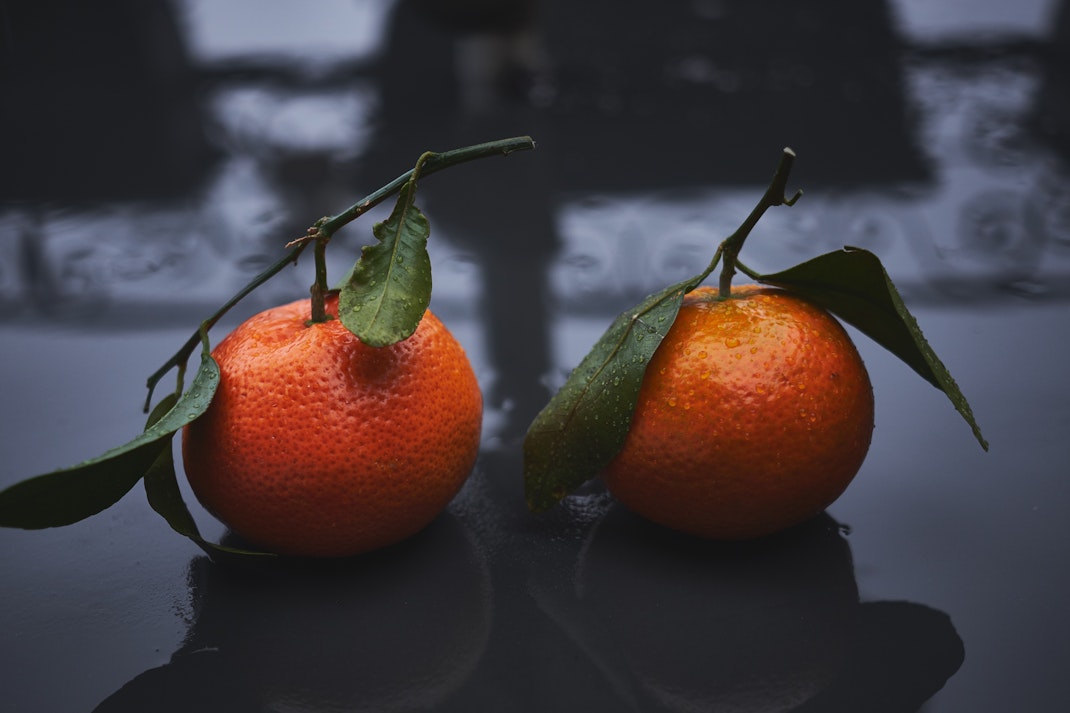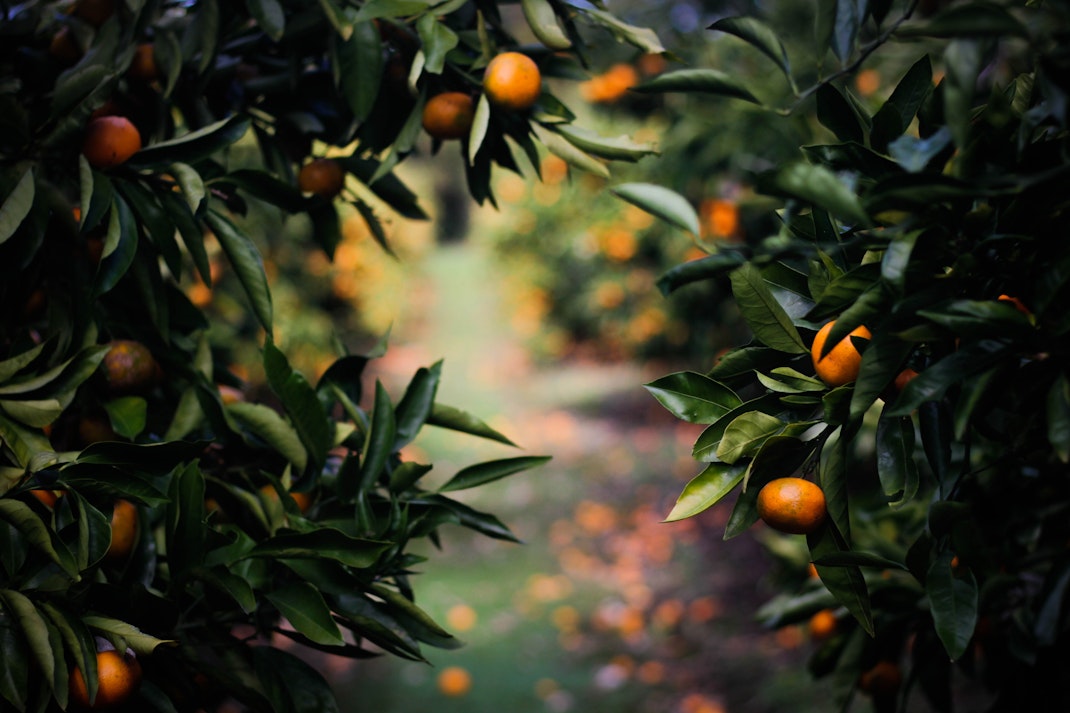 Be Inspired Blog - Arizona
Be Inspired Blog - Arizona

Family Favorites: How to Grow Mandarin Oranges
One of the most popular citrus fruits is the mandarin orange, more commonly known as a Cutie or Halo. These small, flavor-packed oranges are a favorite among kids and adults alike. There are so many varieties and tips to growing your own mandarin tree; first, let’s start with the difference (if any) between a Cutie or Halo. You can also keep reading to learn about the different mandarin tree varieties, tips for growing them indoors and outdoors and how to maintain and grow a healthy tree.
What’s a Mandarin? The Difference Between Cuties and Halos
To start, Eat Like No One describes them as a, “…Cutie or a Halo, it is a mandarin. A mandarin is ‘a small flattish citrus fruit with a loose skin, especially a variety with yellow-orange skin’. It does not have to be seedless but in the case of Cuties and Halos, it is.”
The University of Arizona- Tucson Arizona also explains, “Mandarins are popular because most of the varieties are easy to peel and section well. The fruit has a thin peel which when ripe may ‘plug’ (a section of the peel where the stem was attached is removed if the fruit is pulled from the tree). If you are going to store mandarins it may be necessary to "clip" the stem of the fruit from the tree to prevent ‘plugging’ that otherwise may lead to desiccation or decay.”
Eat Like No One also notes, “Cuties and Halos are different types of mandarins depending on what time of year it is. They are not always the Clementine variety. In fact, Clementines are only available during the beginning part of the citrus season (from November to January). The other mandarin commonly used is the W. Murcott.” Either way, they’re delicious right?
 Available Mandarin Tree Varieties
Available Mandarin Tree Varieties
At SummerWinds we are happy to offer a variety of mandarin tree options; here are a few different types you can find in our stores:
- Owari Satsuma: These are the hardiest of all the mandarins. They are seedless and are slow to grow, but well worth the wait.
- Kishu: This Japanese variety is small, seedless and easy to peel.
- Clementine: When planted with other mandarins, they can have seeds and are sweet and juicy.
- Murcott: Originally from Morocco, this clementine type ripens in the spring and is sprightly in flavor.
- Encore: This is a deep colored fruit that has some seeds in the plant.
- Fremont: This is a deeply flavored mandarin and is also deep in orange color.
- Page: This mostly seedless fruit is a cross between the clementine and the Minello Tangelo.
- Pixie: This small, seedless fruit does well in inter-coastal regions.
- Tango, Tahoe Gold and Yosemite Gold: These UC Patented Mandarins are mostly seedless even when they are planted next to other mandarins. These have a sweet-tart flavor and are deeply orange.
- Gold Nugget: Another UC Patented Mandarin is rick in a gold color, are easy to peel and seedless.
How to Grow Your Own Mandarin Tree Indoors
The conditions of growing mandarins from where they originated (tropical climates in Asia) are easily duplicated in greenhouses or solariums. If you want to grow a mandarin tree in your home, follow these tips for success from one of our favorite partners, Four Winds Growers.
Lighting: Mandarins prefer 8-12 hours of sunlight a day. If you have a limited light area, use full spectrum grow lights.
Temperatures: These plants grow best when the temperature averages 65 degrees; the preferred range is 55 degrees to 85 degrees.
Soil: The best soil option for your mandarin tree is a well-draining, light “garden grade” soil mix. If possible, pick one without wetting agents or fertilizer. Choose a container with proper draining holes and use pebbles in a container for air and water flow. The best fertilizers for mandarin trees offer a slow release, low nitrogen nourishment. Fertilize your mandarin every two months during its first growing season. After that, you’ll want a citrus tree fertilizer with a 2-1-1 ratio and we recommend that you fertilize three times a year—preferably in February, May and October.
Water: The water in the soil needs to be moist, but not wet.
Humidity: When growing in the winter, you may need to add humidity around the plant. To keep leaves lush, use trays of pebbles and water and place them between the tree and your light source.
Growing in Containers: As mentioned above, it is best to use a well-draining soil mix. You should plant two- to three-year-old trees instantly into a 10-16 inch pot with adequate drainage. Four Winds Growers notes that “Upper roots should be just beneath the top of the soil. Firm the soil around the rootball and water. Loosely tie tree to a stake. Repotting with fresh soil mix every 1-3 years will provide fresh nutrients to the roots.
Gardening Know How shares these helpful tips to plant your own mandarin orange tree:
- Start seeds indoors and transplant them into a new pot or directly into your garden once they’ve germinated and grown into small trees.
- Make sure your mandarin orange tree has full sun exposure.
- If growing your citrus tree in a container, make sure it is three times bigger than the seedling’s root ball.
- If using a container, use a well-draining potting mix with compost.
- If planting in the ground, amend the soil with a 20-pound bag or organic material for each food of sail.
- Drainage is important as mandarins, “Don’t like to get their ‘feet’ wet.”
 How to Grow Your Own Mandarin Tree Outdoors
How to Grow Your Own Mandarin Tree Outdoors
If you want to take your mandarin tree outdoors, that is perfect because they are great for growing in low deserts.
Before growing your mandarin tree, here are some things to consider from The University of Arizona- Tucson Arizona report:
- Choose varieties that are sweet in flavor and easy to peel, which are perfect because that’s what Halos and Cuties are.
- Did you know that the harvest time will have an impact on flavor? The report explained, “Citrus fruit will not ripen once removed from the tree. However, if the fruit is left on the tree it will continue to sweeten as the season progresses. For example, grapefruit is palatable in September, but most people prefer them in March or April when they are sweeter and have less acid.”
- Mandarins can handle the cold; they are a great, hardy fruit for when the weather dips in the valley.
Mandarin Tree Maintenance
After you’ve planted your mandarin orange tree in a container or the ground, it is important to know how to maintain and take care of it. Here are a few of our expert tips for citrus tree care:
Watering: Citrus trees do well with heavy watering. Avoid watering the tree for just a few minutes every day. Instead, give them a heavy watering every one to two weeks in the warm summer months and every three to four weeks during the cooler winters.
Pruning: Pruning can be done anytime of the year, except during the winter months. During the first year, it is best to pinch off blooms to allow the tree to mature before producing fruit. You can also pinch back tips of new growth to encourage branching. Prune your citrus tree to any desired shape and height. S
Suckering: It is important to remove the tree suckers as soon as possible.
These new growths take energy away from the healthy branches on the top of the tree. To remove a sucker, find the graft on your mandarin tree. This is usually 4 to 12 inches above the soil line and looks like a horizontal or vertical ‘V’. You will also notice an obvious change in the bark of the tree. Remove any growth below the graft.
Insects: Lady beetles, lacewings and praying mantis are frequently found around citrus trees and will not cause any harm, but do watch out for aphids, citrus whitefly and orange dog caterpillars as they can cause damage to your tree.
You can find more citrus tree care tips here.
Start Growing and Start Peeling
Are you ready to start growing your own Halo or Cutie tree? Mandarin trees are great plants to grow in our valley, both indoors in containers and outdoors in your yard.
We highly recommend these trees because they produce easy-to-peel, seedless, sweet fruit. Visit your local SummerWinds Nursery to pick out yours today.
Questions? Do you still have questions about growing mandarin oranges? We’ve got your answers! Stop by your local SummerWinds Nursery and speak with one of our Trusted Garden Advisors.
About SummerWinds Nursery—a leading high-end retailer of garden and nursery products. Headquartered in Boise, Idaho, SummerWinds Garden Centers, Inc. operates retail nurseries in the greater Phoenix, Arizona area, and in Silicon Valley, California, making it one of the largest independent retail nursery companies in the nation. SummerWinds appeals to both the serious and casual gardeners, with a broad selection of premium gardening products and a friendly and knowledgeable staff.

